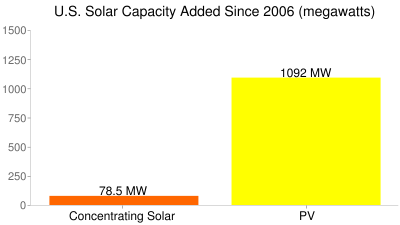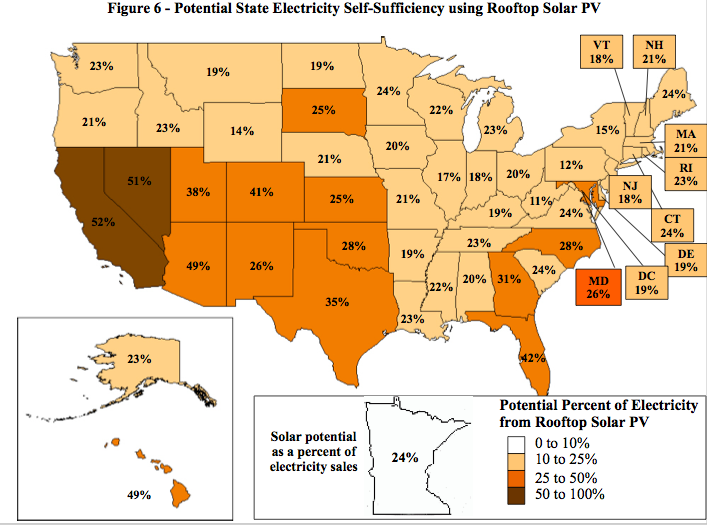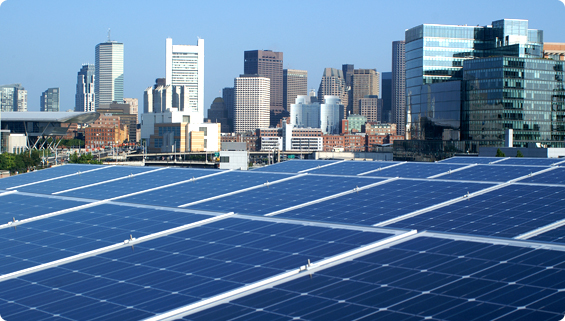This is part of a series of posts on distributed renewable energy that will be posted to Grist. It originally appeared on Energy Self-Reliant States, a resource of the Institute for Local Self-Reliance’s New Rules Project.
An article in The New York Times last week suggested that a dearth of financing is holding back solar power in the United States. In particular, the authors note that “the country needs to build large plants covering hundreds of acres,” projects that can cost $1 billion. These large solar projects are languishing without financing, they assert, in part because of the lengthy process to claim federal government loan guarantees and because, “Bankers generally prefer smaller, less risky projects and shorter-term loans than the 20-year terms solar plants typically need.”
Perhaps energy advocates should listen to the bankers.
 While the U.S. government lavishes loan guarantees and expedites review of projects on public land for multi-megawatt and even gigawatt solar projects, it’s small-scale solar that’s turning sunshine into electricity. Since 2006 — the first time a concentrating solar thermal electricity power plant was built since the early 1990s — solar photovoltaics (PV) has added 13 times more capacity to the U.S. electric grid than concentrating solar power plants. And the largest solar PV power plant in the U.S. is 25 megawatts.
While the U.S. government lavishes loan guarantees and expedites review of projects on public land for multi-megawatt and even gigawatt solar projects, it’s small-scale solar that’s turning sunshine into electricity. Since 2006 — the first time a concentrating solar thermal electricity power plant was built since the early 1990s — solar photovoltaics (PV) has added 13 times more capacity to the U.S. electric grid than concentrating solar power plants. And the largest solar PV power plant in the U.S. is 25 megawatts.
Solar PV is far from reaching its maximum growth potential. The U.S. installed 430 megawatts of solar PV in 2009 whereas the German solar market expanded by 3,800 megawatts in 2009 alone. Germany is not using big solar either, with the average project smaller than 30 kilowatts and the country’s largest solar PV power plant measuring just 80 megawatts.
Furthermore, the potential for solar PV on rooftops alone is vast. In our 2009 report (and inspiration for this web project) “Energy Self-Reliant States,” we found that most states could produce at least 20 percent of their entire electricity needs off of rooftop solar arrays within their own borders.
We don’t have to build big projects to reach big numbers. And best of all, by building small, we don’t have to wait. Check out the rooftop solar PV’s potential to make states more energy self-sufficient:





